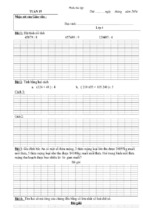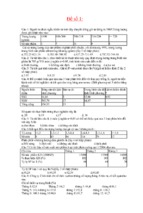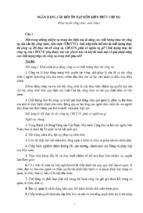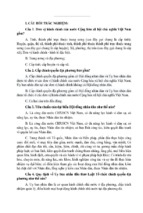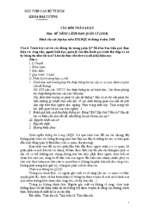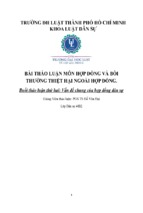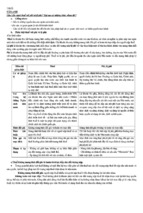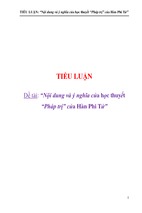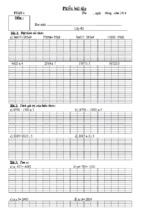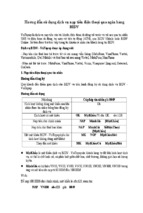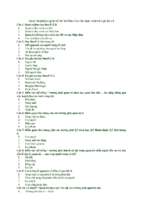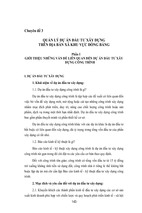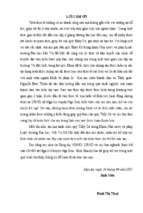?
Fundamentals of Public Economics
CONTENTS
Chapter 1: Introduction
Chapter 2: Commodity Taxation
Chapter 3: Income Taxation
Chapter 4: Risk
Chapter 5: Corporate Taxation
Chapter 6: Public Goods
Chapter 7: Externalities
Chapter 8: Imperfect Competition
Chapter 9: Tax Evasion
Chapter 10: Overlapping Generations Economies
Chapter 11: Social Security
Chapter 12: Debt and Taxes
CHAPTER 1
Introduction
1.1 Public Economics
Public economics (or economics of the public sector) is the study of government policy through
the lens of economic efficiency and equity. At its most basic level, public economics provides a
framework for thinking about whether or not the government should participate in economics
markets and to what extent its role should be. In order to do so, microeconomic theory is utilized
to assess whether the private market is likely to provide efficient outcomes in the absence of
governmental interference. Inherently, this study involves the analysis of government taxation
and expenditures. This subject encompasses a host of topics including market failures,
externalities, and the creation and implementation of government policy. Public economics
builds on the theory of welfare economics and is ultimately used as a tool to improve social
welfare.
In the broadest interpretation, public economics is the study of economic policy, with particular
emphasis upon taxation. The subject therefore encompasses topics as diverse as responses to
market failure due to the existence of externalities and the determination of optimal social
security policies. This characterization reflects an extension of the scope of public economics
from its initial emphasis upon the collection and disbursement of government revenues to its
present concern with all aspects of government economic intervention. The intention of this book
is to provide an introduction to the vast literature of public economics, emphasizing the
foundations upon which future research can be laid.
Public economics has a long history as a discipline within economics and many eminent
economists have written on the subject. For example, Ricardo (1817) discussed the effects of
public debt, the incidence of taxation in imperfectly competitive markets was analyzed by
Cournot (1838), Edgeworth (1925) considered the effects of taxation on multi-product firms and
Pareto (1909) set out the foundations for making social decisions. The explanation for this
interest in public economics is no doubt contained in the close connection of the analysis with
policy and application, which are the ultimate inspiration of most economists. Exposing a
theoretical construction to policy analysis also highlights its value and provides a test of its
relevance. However, it is also true that before a good policy can be designed an adequate theory
must be developed. One of the challenges of public economics is that much of the subject area is
still in its infancy with considerable work still to be done.
An emerging trend in the public economics literature has been the use of numerical methods.
These have taken the form of both simulations of economies in order to test their behavior and
the evaluation of policy proposals using empirical data. The latter technique indicates a
promising convergence between theory and application and is clearly a direction in which the
subject will continue to move.
The dominant setting for the analysis of public economics is within the mixed economy so that
individual decisions are respected but the government intervenes to affect these choices. The
design of policy can then be interpreted as the manipulation of individual choices by the choice
of policy parameters so as to arrive at an equilibrium preferred to that which would arise in the
absence of policy. This makes the results of the studies applicable to most developed economies
and concurs with the present ascendancy of such a form of economic organization. To provide a
benchmark from which to judge the outcome of the economy under alternative policies the
perfectly controlled command economy with an omniscient planner is often employed.
Naturally, this usage of the command economy implies no claim that such perfect control is
possible, or even desirable.
1.2 Public sector income and expenditure
The public sector plays an important role in the mixed economies of the major industrialized
countries. To show quite how important, this section presents some summary statistics
concerning the size and structure of the public sector. Whilst there are some well-recognized
issues concerning the appropriate definition of the public sector, these do not affect the validity
of the broad sketch given here.
Table 1.1 shows the pattern of public sector total outlay as a percentage of nominal GNP over the
period 1978 - 1993 for seven of the major industrialized countries from North America, Europe
and Asia. For these countries, public sector expenditure falls in the range of 30 - 55% of GNP
with Japan and the United States having the smallest public sectors and Italy and France the
largest. Even though the range is large, the public sector is significant in every case. Expenditure
in Italy shows sustained growth through the period, as it does in the U.S. but to a lesser extent.
Other than these countries, the pattern is generally one of the public sector being a constant
proportion of GNP. This relative stability over the recent past is in sharp contrast to the period of
expansion of the public sector experienced by the industrialized countries from 1890 through to
1970.
The major implication of Table 1.1 is that it clearly justifies the claim that the public sector is
significant in the economies of the industrialized countries and the mixed economies of these
countries are characterized by substantial government involvement. They are far from being freemarket with minimal government intervention. The size of the public sector alone is justification
for the study of how it should best choose its means of revenue collection and its allocation of
expenditure. It is also worth noting that data on expenditure typically understates the full
influence of the public sector upon the economy. For instance, regulations such as employment
laws or safety standards infringe upon economic activity but without generating any measurable
government expenditure or income.
Table 1.2 shows the proportion of Japanese government income derived from various sources
and the division of its expenditure. The chart for income shows that direct taxation is the largest
single component. Social security contributions and indirect taxation are the next largest and
make fairly similar contributions to income. In terms of expenditure, social security spending is
the largest category followed by purchases of goods and services. Interest on public debt is also a
significant item of expenditure.
A similar breakdown of income and expenditure is reported for the United Kingdom in Table
1.3. Contrasted to Japan, the U.K. shows greater reliance upon indirect taxation, with indirect
taxation generating slightly more revenue than direct taxation. The relative size of social security
contributions is also much less than in Japan. The relative sizes of the expenditure items are very
similar, although the U.K. spends more on goods and services but less on subsidies. The social
security item in Japan is equivalent in relative size to the transfers in the U.K.
Figure 1.1: General government total outlay as % of nominal GDP
Figure 1.2: Japanese Government Income 1991
Figure 1.3: Japanese Government Expenditure 1991
Tables 1.2 and 1.3 demonstrate the importance of direct and indirect taxation in the collection of
revenue for the U.K. and for Japan. Taken together, these generate 73% of revenue in the U.K.
and 63% in Japan. The third item of income, social security contributions, is 17% of income in
the U.K. and 27% in Japan. An alternative perspective on the relative importance of the three
major categories of income is given in Table 1.4. This shows receipts as a percentage of GDP for
the U.S. and as an average for other OECD countries. For the U.S., consumption taxes are
relatively less important than as shown for Japan and the U.K. above and as against the average
over OECD countries. However, consumption tax receipts still equal over 4% of U.S. GDP.
Social security taxes raise twice the income of consumption taxes whilst income tax receipts
represent one tenth of GDP. In contrast, the OECD average shows rather more equality between
receipts from income and consumption taxes.
Table 1.5 shows the expenditure of the U.S. Federal Government broken down into type and
function, expressed as a percentage of total expenditure. Similarly, Table 1.5b has the same
breakdown for State and Local Government. These tables reveal that the major items of
expenditure for Federal Government are income support and social security, and defence. In
contrast, the major item for State and Local Government is education followed by income
support and social security. Other than these, the most significant items are the net interest paid
by the Federal Government and transportation and civilian safety paid for by State and Local
Government. The items can be placed into separate categories representing the breakdown of
public sector objectives: defence expenditure is one of the minimal requirements; income support
is evidence of concern for equity; and education represents provision of a public good to counter
market failure.
Figure 1.4: UK Government Income
Figure 1.5: UK Government Expenditure
Summary
Although brief, this review of statistics on the size and structure of public sector income and
expenditure has illustrated the significant extent of public sector intervention in the mixed
economies of the industrialized countries. The relative importance of alternative sources of
revenue has been shown as has the range of expenditure.
The earlier contributions were primarily concerned with the use of data to calculate losses for
actual economies (Harberger for the USA, Cowling and Mueller for the UK and USA) but more
recent work has concentrated on the use of simulations to calculate potential losses (Bergson
(1973), Kay (1983)). Dickson and Yu (1989) employs a mix of both data and simulation. With
respect to the form of model, the vast majority of contributions have adopted a partial
equilibrium framework. There are some exceptions to this, most notably Ireland (1978), Kay
(1983) and Myles (1994a).
The initial study of monopoly welfare loss is usually attributed to Harberger (1954) who
considered the effect of monopolisation in United States manufacturing industry for the period
1924 to 1928. From the data it is concluded that welfare loss is equal to 0.08% of national
income. Clearly if this figure is accurate, then monopoly welfare loss was insignificant in the
United States. In contrast to Harberger, Cowling and Mueller (1978) include the cost of
advertising in the measure of welfare loss on the interpretation that advertising is undertaken
with the intention of maintaining a monopoly position. This naturally raises their estimates. Their
analysis of welfare loss in the United States is based on data for 734 firms between 1963 and
1966 and concludes that welfare loss is between 4% and 13% of Gross Corporate Product. For
the United Kingdom, Cowling and Mueller conclude that the top 103 firms in 1968 to 1969,
accounting for a third of GNP, generated a welfare loss of between 3.9% and 7.2% of Gross
Corporate Product. This contrasts with the loss of 0.2% to 3% using the Harberger measure for
the same data set. These two sets of figures clearly provide conflicting evidence, as do the
numerous other contributions that are surveyed in Sawyer (1981). The actual extent of welfare
loss therefore remains an open question.
Turning now to measures of welfare loss in simulation models, these have generated far higher
figures than analyses of data. Using a constant elasticity of substitution utility function, Bergson
(1973) produces a range of estimates from 0.06% of national income to 39.03% The drawback to
these figures is that they are calculated on the basis of hypothesized price-cost mark-ups rather
than having the mark-up determined as the equilibrium of a specified economy. Kay (1983)
employs a model with one consumption good that is produced by a monopolist using a single
form of labor service.
CHAPTER 2
Commodity Taxation
2.1 Introduction
This chapter is the first to consider policy analysis and to arrive at characterizations of optimal
policies. The ideas that it surveys have developed over a considerable period, beginning with the
seminal contribution of Ramsey (1927). One important feature of this development is the gradual
increase in generality and the recent move towards applying the theoretical analysis to data. This
has moved the theory closer to practical application.
The initial literature on commodity taxation focused upon the following simple problem. There is
a given level of government revenue to be raised which must be financed solely by taxes upon
commodities: how should these taxes be set so as to minimize the cost to society of raising the
required revenue? If a social welfare function is adopted to represent the state’s preferences, the
problem can be conveniently rephrased as that of choosing the commodity tax rates to maximize
social welfare subject to the revenue constraint.
The first solution to this problem was given by Ramsey (1927) following its proposal to him by
Pigou. This contribution appears to have been overlooked for the following forty years during
which time the less general inverse elasticities rule became a standard feature of textbooks. The
results of Ramsey were rediscovered by Samuelson (1986) in a 1951 memo to the U.S. Treasury.
The theory of commodity taxation was given its modern form by Diamond and Mirrlees (1971)
in an analysis that made much use of the emerging duality methods and results in general
equilibrium theory. Diamond and Mirrlees (1971) derived both single-household and manyhousehold tax rules and proved the Production Efficiency Lemma. Developments since the
publication of Diamond and Mirrlees have been concerned with the practical implementation of
the methods of that paper and in extensions of the basic economy away from the standard
competitive framework with constant returns to scale.
It should be noted that there are close connections between the theory of commodity taxation and
that of public sector pricing. In both cases the government is choosing the set of consumer prices
that maximize welfare subject to a constraint. Under the commodity taxation interpretation these
prices are achieved by setting the level of tax to be included in each consumer price whereas
with public sector pricing the prices are chosen directly. However the choice of tax rate is
equivalent to the choice of consumer price. In the context of public sector pricing, the optimal
prices are generally known as Ramsey prices. The constraint on the optimisation with
commodity taxation requires the raising of a specified level of revenue. With public sector
pricing this can be reinterpreted as the need to raise a given level of revenue in excess of
marginal cost. The tax rates of the commodity taxation problem then translate into the mark-up
over marginal cost in the public sector pricing interpretation.
The chapter begins by deriving the single-household Ramsey rule and providing an interpretation
of this. It is then shown how the inverse elasticity rule follows as a special case. The extension to
many consumers is made and the resolution of the equity/efficiency trade-off is emphasised. This
is followed by a review of numerical calculations of optimal taxes based on empirical data. Three
more specialised topics are then considered: generalising the production technology; the status of
untaxed goods; and conditions guaranteeing the uniformity of taxes. A discussion of the
Diamond-Mirrlees Production Efficiency lemma concludes the chapter.
2.2 The Ramsey rule
The Ramsey rule is one of the oldest results in the theory of optimal taxation and is probably the
oldest formally stated result. It is derived from an analysis of the simplest form of general
equilibrium economy, that with a single household. The single household basis implies that there
can be no equity considerations in the setting of tax rates so that the resulting tax rule describes
an efficient tax system. As the Ramsey rule forms the basis for later results, its derivation is
described in some detail.
2.2.1 The economy
The Ramsey rule is derived within the context of a competitive economy in which there are
available n consumption goods and a single form of labour. Labour is the only input into
production. In addition, each industry is assumed to produce a single output using constant
returns to scale technology. There is a single household or, equivalently, a population of identical
households, whose preferences can be represented by an indirect utility function.
2.3 Implications
The Ramsey rule only provides an implicit expression for the optimal tax rates and precise
statements cannot be made without further restrictions. However, some general comments can be
made. Accepting the approximation interpretation, this suggests that since the proportional
reduction in compensated demand must be the same for all goods it can be expected that goods
whose demand is unresponsive to price changes will bear higher taxes. Although broadly correct,
this statement can only be truly justified when all cross-price effects are accounted for. One
simple case that overcomes this difficulty is that in which there are no cross-price effects
between the taxed goods; this limiting case will be considered in the next section.
Returning to the general case, goods that are unresponsive to price changes are typically
necessities such as food and housing. Consequently, the implementation of a tax system based on
the Ramsey rule would lead to taxes that would bear most heavily on necessities, with the lowest
tax rates on luxuries. This interpretation has been demonstrated more formally by Deaton (1981)
under the assumption of weak separability of preferences. Put into practice, this structure of
taxation would involve low income households paying disproportionately larger fractions of their
incomes in taxes. The inequitable nature of this outcome is simply a reflection of the single
household assumption: the objective function of the maximisation does not care about equity and
the solution reflects only efficiency criteria.
The equilibrium determined by the set of optimal taxes is second-best compared to the outcome
that would arise if the tax revenue had been collected via a lump-sum tax. This is because the
commodity taxes lead to substitution effects which distort the household’s optimal choices and
lead to efficiency losses. Although unavoidable when commodity taxes are employed, these
losses are minimised by the optimal set of taxes that satisfy the Ramsey rule.
Since the single-household framework is untenable as a description of reality and leads to an
outcome that would be unacceptable on the most minimal of equity criteria, the value of the
Ramsey rule is therefore primarily in providing a framework and a method of analysis that can
easily be generalised to more relevant settings. Contrasting the Ramsey rule tax system with later
results will also highlight the consequences of the introduction of equity considerations.
2.4 Inverse elasticities rule
The inverse elasticities rule, discussed in detail in Baumol and Bradford (1970), is derived by
placing further restrictions on the economy used to derive the Ramsey rule. To be precise, it is
assumed that there are no cross-price effects between the taxed goods so that the demand for
each good is dependent only upon its own price and the wage rate. Invoking this assumption
essentially turns the general equilibrium model into one of partial equilibrium as it removes all
the interactions in demand and, as shown by Atkinson and Stiglitz (1980), the inverse elasticities
rule can be derived from minimising the excess burden of taxation in a partial equilibrium
framework. The independence of demands is clearly a strong assumption and it is therefore not
surprising that a clear result can be derived.
2.5 Extension to many-households
The objective of this section is to extend the single-household economy of the Ramsey rule to
incorporate further, non-identical, households. This extension naturally introduces equity
considerations into the determination of the optimal tax rates. The principal paper in this area is
Diamond and Mirrlees (1971) in which was presented the first integrated analysis of this issue.
Other important references are Diamond (1975) and Mirrlees (1975).
The variant of the Diamond-Mirrlees economy studied in this section is a restriction of the
general case and simply involves extending that used to derive\ the Ramsey rule by adding
further households. The restrictions on the production technology are retained, so that labour
remains the only input into production and technology is constant returns to scale. It is worth
noting that the restrictions do not significantly affect the form of the optimal tax structure.
2.5.1 A cautionary note
To this point the analysis has proceeded on the implicit assumption that the first-order condition
for the maximisations is accurately characterize the solution. However this need not always be
the case. It is a standard result that an indirect utility function representing convex preferences
will be quasi-convex in prices. That is, the set of prices that leads to less than a specified level of
utility is a convex set. In addition, with linearity in labour supply the indirect utility function may
even be strictly convex, see Varian (1984). This poses difficulties for many maximisations in
public economics.
For the Ramsey rule, the objective function was the household’s indirect utility function and
hence was quasi-convex. In the many-household economy, the objective was some concave
function of the vector of indirect utility functions. Despite the concavity of social welfare in
utility it need not be concave in the choice variables, the tax rates and due again to the quasiconvexity of indirect utilities. In addition, the set of tax rates that generate at least the required
revenue may not be a convex set.
For these reasons the standard sufficiency conditions of quasi-concave programming cannot be
appealed too so there is no guarantee that the first-order conditions actually describe a maximum.
This problem occurs throughout public economics where many maximisations are ill-conditioned
and has been explored extensively by Mirrlees (1986). This problem is often put to one side and
it is simply assumed that the first-order conditions will correctly describe the optima. Although
unsatisfactory, there is typically little alternative to this. Some comfort can be taken in the
present circumstances by appealing to the work of Diamond and Mirrlees (1971) who prove that
their first-order conditions do represent the solution to the optimal commodity tax problem.
2.6 Untaxed goods
The role of normalisation procedures and of the untaxed good was discussed at some length in
the previous section. The importance of applying normalizations correctly has been emphasised
in the literature on optimal commodity taxation by the number of cases in which they have been
misunderstood. This section notes the misunderstandings that have arisen and illustrate their
origins.
It has been shown that in an economy with constant returns to scale, consumer and producer
prices can be normalised separately and that the standard procedure is to make one good the
numeraire and set its consumer and producer prices equal. This normalisation also has the effect
of setting the tax on that good to zero. The latter fact is clearly seen to be of no consequence
whatsoever since the zero tax is just a result of the normalisation rule. In particular, the zero tax
carries no implications about the nature of the good nor about the ability to tax that good. This
follows since the good with zero tax can be chosen arbitrarily from the set of available goods.
Unfortunately, this reasoning has not been as clearly appreciated in some of the literature as it
should have been. The reason for this has been the convention, as the untaxed commodity. Since
labour is often viewed as the negative of leisure, it has been inferred from this that, since leisure
cannot be measured in the same way that purchases of other commodities can, the zero tax on
leisure is a restriction on the permissible tax system brought about by an inability to tax leisure.
In addition, the further inference is usually made that the optimal tax system aims to overcome
the missing tax on leisure by taxing goods complementary to leisure. Particular examples of this
are found in Corlett and Hague (1953) “By taxing those goods complementary with leisure, one
is to some extent taxing leisure itself “and Layard and Walters (1978) “The theory of second best
tells us that it we cannot tax leisure, we can do better than by taxing all other goods equi
proportionately. “ Many other instances of similar statements could easily be given. This, of
course, is a false interpretation. When real restrictions upon the permissible range of tax
instruments are introduced the results obtained are affected. A number of such restrictions are
considered in Munk (1980) where it is shown that the resulting optimal tax structure is sensitive
to the precise restrictions imposed”.
A further mistake that has arisen in this context can be found in Dixit (1970) and Lerner (1970).
In a single-household economy, any required revenue can be raised most efficiently by a lumpsum tax on the household equal to the value of the revenue. Noticing this, it has been suggested
that a set of commodity taxes which raise the price of all goods by the same proportion will have
the same effect as the lump-sum tax and therefore that when all goods can be taxed, the optimal
system has the same proportional tax on all goods. This conclusion is clearly in contrast to that of
the Ramsey rule. The mistake in the reasoning was pointed out by Sandmo (1974) who
demonstrated that such a proportional tax system would raise no revenue. This follows since
households both demand goods and supply labour. A proportional tax then taxes demands but
subsidises supplies and, since the value of household demand equals the value of supply, the
proportional tax is just offset by the proportional subsidy. Effectively, the proportional tax on all
commodities is just a rescaling of the consumer price vector which does not affect household
choices.
2.6 Uniform taxes
The numerical results reported in Section 5 have demonstrated that in general the structure of
optimal commodity taxes will be far from uniform. However, uniform taxes are not without their
supporters, see for example Hatta (1986), and it is natural to consider whether there are any
circumstances in which the optimal structure should be uniform.
Conditions guaranteeing uniformity have been derived in papers by Deaton (1979, 1981) and
Besley and Jewitt (1990). These papers have used a variety of representations of preferences in
alternative formulations of the optimal tax problem. To present the central result in the manner
closest to the analysis above, this section will present the problem in terms of ad valorem
taxation with an indirect utility function capturing preferences.
2.7 Production efficiency
Production efficiency occurs when an economy is maximising the output attainable from its
given set of resources. This requires the economy to be on the boundary of its production
possibility set. When such a point is attained, reallocation of inputs amongst firms cannot
increase the output of one good without reducing that of another. In the special case in which
each firm employs some of all of the available inputs, a necessary condition for production
efficiency is that the marginal rate of substitution (MRS) between any two inputs is the same for
all firms. Such a position of equality is attained, in the absence of taxation, by the profit
maximisation of firms in competitive markets. Each firm sets the marginal rate of substitution
equal to the ratio of factor prices and, since factor prices are the same for all firms, this induces
the necessary equality in the MRSs. The same is true when there is taxation provided all firms
face the same post-tax prices for inputs, that is, inputs taxes are not differentiated between firms.
In the context of commodity taxation, Diamond and Mirrlees (1971) proved the Production
Efficiency Lemma. Assuming the economy is competitive, the lemma states that the equilibrium
with optimal commodity taxation should be on the frontier of the aggregate production set. This
can only be achieved if private and public producer face the same shadow prices and if input
taxes are not differentiated between firms. In addition, since the competitive assumption implies
that any set of chosen post-tax prices can be sustained by the use of taxes on final goods alone,
the latter statement also carries the implication that intermediate goods should not be taxed.
This result was seen as surprising at its time of publication because it was clearly in sharp
contrast to the predictions of the Lipsey-Lancaster (1956) Second-Best theory that was being
widely applied. Application of Second-Best theory, which typically suggests that one distortion
should be offset by others, would imply that the distortion induced by the commodity taxes
should be matched by a similar distortion in input prices. Commodity taxation is therefore a
special case for which the general reasoning requires careful application.
The efficiency lemma, and the structure of the optimal commodity tax problem, can easily be
explained diagrammatically for a single household two-good economy. In Figure 2.1 the
horizontal axis measures input use and the vertical axis output. The shaded area is the production
set for the economy and the horizontal distance of the production set from the origin represents
the tax revenue required in units of the input good. It is assumed that the household supplies the
input and consumes the output, so that the supply of more input from the household permits the
purchase of more output. The household’s budget constraint is therefore upward sloping and, in
the absence of lump-sum taxes or income, must pass through the origin. Denoting the optimal set
of post-tax prices by q, the budget constraint corresponding to this price vector is illustrated.
Since supplying the input causes the household disutility, an increase in input supply must be
compensated for by further consumption of output in order to keep utility constant. The
household’s indifference curves are therefore downward sloping.
Figure 2.1: Production Efficiency
Although Figure 2.1 was motivated by considering the input to be labour, a slight reinterpretation can introduce intermediate goods. Assume that there is an industry that uses one
unit of labour to produce one unit of an intermediate good and that the intermediate good is then
used to produce final output. Figure 2.1 then depicts the intermediate good (the input) being used
to produce the output. Although the household actually has preferences over labour and final
output and acts only on the markets for these goods, the direct link between units of labour and
of intermediate good allows preferences and the budget constraint to be depicted as if they were
defined directly on those variables. The production efficiency argument then follows directly as
before and now implies that intermediate goods should not be taxed since this would violate the
equalisation of MRSs between firms.
2.8 Summary
This chapter has reviewed the major contributions to the large literature on optimal commodity
taxation in a competitive economy. The Ramsey rule, which represents the starting point for the
modern analysis of commodity taxation, has been introduced and its standard interpretation has
been given. Although efficient, the tax system the tax system this describes would be inherently
inequitable. To introduce equity considerations, the economy was then extended to incorporate
many households following the work of Diamond and Mirrlees. This extension clarified the
effects of equity upon the optimal rates of tax and demonstrated how the equity/efficiency tradeoff was resolved. The economy was then generalised further and the Diamond-Mirrlees
Production Efficiency Lemma was proved. Contrary to the expectations of Second-Best theory,
this lemma showed that production efficiency is desirable in conjunction with the optimal set of
commodity taxes.
- Xem thêm -

